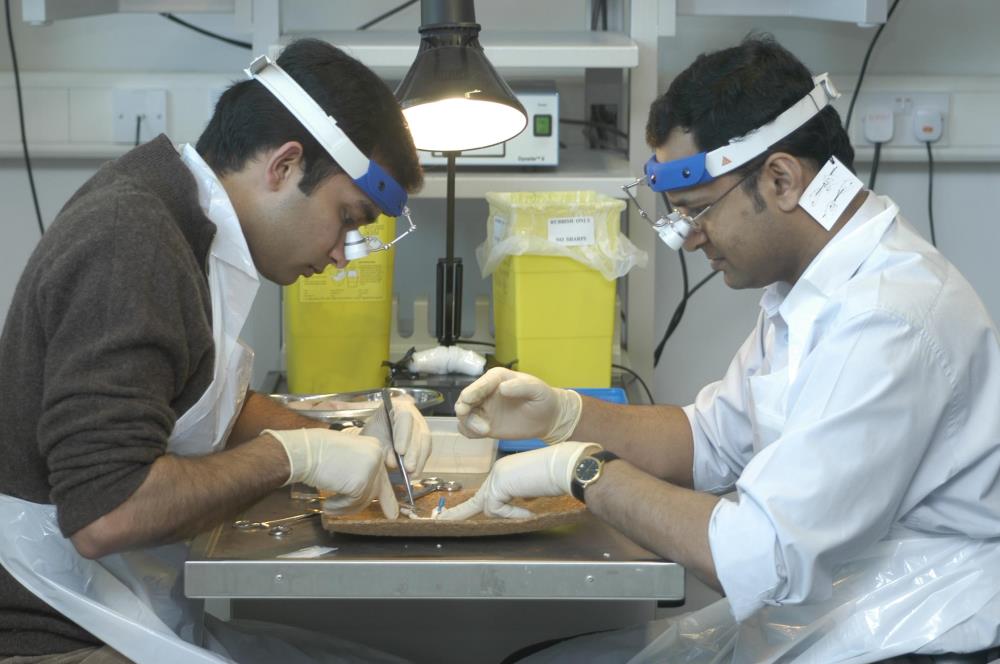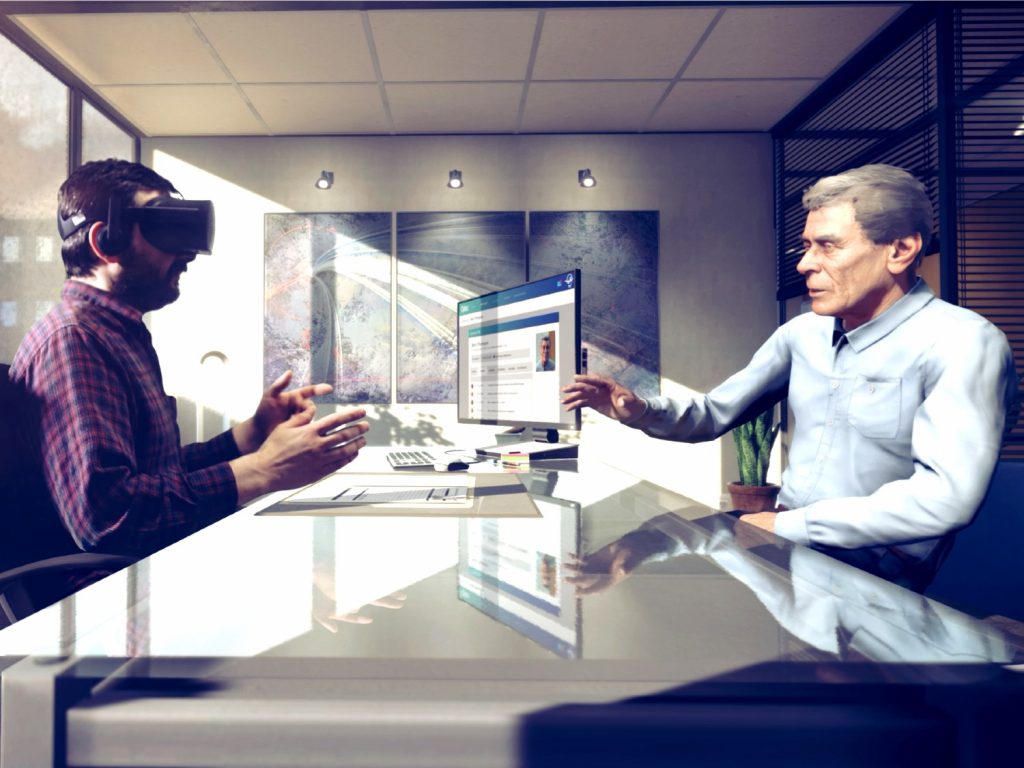The high-tech age has already come and we can see how the world has changed in the past few decades. We can say that we are in a way at the peak point of a revolution. From now on, things will develop even faster. Scientists from all fields are using the momentum in order to come to new discoveries and conclusions. Technology is booming and in recent years the appearance of VR has drawn the attention of many. It seemed that, when it first appeared, it was merely used in the world of gaming. But nowadays, there are so many ways in which VR improves real-world skills training. Here, we’ll closely look into five of them.
Do you actually know what Virtual Reality is?
This term, in the sense we are familiar with today, has been in use since the 1950s. Computer engineers needed this term to explain something that does not actually exist but it appears to thanks to the use of the software. This technology allows combining the best of both the virtual and real world. It is something that mostly refers to reality emulation. And through a computer-generated virtual environment, our senses are being stimulated. The use of VR technology will eventually find many purposes for improving real-world skills training.
VR improves functionality and creates a bridge between traditional classes and virtual ones
The system of education we all know may soon be a matter of the past. The classical way of giving lectures will become obsolete. Consequently, it will step aside and make room for some new, innovative methods which VR can provide. It is said that VR will impact education by opening doors to endless possibilities of demonstrating certain things without just using chalk and a blackboard.
New classrooms reinforce learning potential and provide more practice for skills training
Imagine that you are in a chemistry classroom where the professor wants to explain what would happen if the wrong chemicals were combined. In a regular classroom, that would even be dangerous. However, in a virtual one, such things are allowed. Getting feedback directly after practicing also contributes to leveling up your skills.
We can also see that VR improves real-world skills training in the case of medical students. This way, they will be able to witness a graphically rich representation of some surgeries and learn more about possible outcomes.
With VR you can:
- Keep track of the progress you’ve made
- Get instant feedback
- Record lectures so that you can revise them
- Upload your own notes through slides
With this kind of technology at teachers’ disposal, there won’t be any need for outdated teaching methods or boring diagrams and charts. VR is much more interactive and brings the subject closer, giving more details.
VR perfects life skills
Every now and then, some sort of crisis will break out. Either a crime, fire, flood or any other unfortunate event for which there has to be a group of skilled people, specially trained for that kind of situations. The best way to be considered a professional is that you already have experience in certain situations. But what about the newly recruited? They surely lack experience, so you can’t just rely on them for the most dangerous situations. On the other hand, every person matters. This is where augmented reality training steps in. Not only will it provide real-life scenarios, even the most dangerous ones, but the skills training will also be performed in a safe environment. So, there is no fear that any candidate will end up being hurt.
VR is applied in different kinds of business
There are many examples of how virtual reality training serves its purpose for different sorts of critical situations:
- In case of armed robberies, with hostages included, a special team could work on the best strategy for taking over
- An emergency medical team can train how to react in the best way and make decisions fast
- When big fires or floods break out, after training for every possible outcome, the rescue team will be fully ready
- Future pilots can obtain all the necessary skills to operate an aircraft in all possible weather conditions. Moreover, assembly workers are able to reduce inspection time by using 3D aircraft models.
- VR is applied in the automobile industry to test the feel of various components. This greatly saves time for constructing a prototype and at the same time money.
As seen from the above-mentioned examples, the point of this skills training is to help eliminate as many risky courses of actions as possible and bring security to a higher level. Using VR will help trainees obtain new skills through their training.
In medicine, VR technology enables a specific insight into the performance
Patients with a motor dysfunction can now experience a major step forward in their recovery by combining virtual skills training with their classical rehabilitation training. With these two methods, the patients who have experienced some kind of accident or lost their motor skills for any other reason can accelerate the acquisition of motor skills. The more the patients work like this, the faster their brains will pick up the impulses which will contribute to their faster recovery. There are more useful examples in the medical and education space.
Deeper analysis and better therapies are guaranteed
Besides the patients who have partially or completely lost their motor function, there are those who are battling other problems, equally serious. Those include different kinds of depression and anxiety caused by traumas or other disorders. The use of VR has turned out to be greatly beneficial in the sense that it teaches the patients how to control their reactions, be more relaxed and learn how to show compassion. It gives them a chance to go through a role-play during which they would face challenges and the therapists would see how well they can deal with them.

VR helps improving soft skills training in business
Modern corporations that strive for advancement could also benefit from virtual reality skills training. Not only are business management software solutions what matters and what will help you stay organized and have easier communication with all the employees – but investing in training staff at all levels is also something that will raise the status of the company and enhance its business.
Going forward in business means to bring innovations and follow trends. The most efficient way to achieve the best results is by organizing corporate training. In-person training has been widely used throughout the years, which enabled participants to engage in group scenarios and through that training strengthen their existing skills and gain new.
However, VR brings new possibilities since the participants can go through many different scenarios and have the right to make as many mistakes without real consequences. What’s more, this technology allows the user to enjoy its benefits from any location in the world. During training, people who use all the advantages of VR technology will have all the necessary instructions presented to them. What is more, this training will be available only within the already selected circle of people and will be possible to be distributed further.
Here are some examples
With this training, the employees and CEOs have a chance to try themselves in:
- Giving presentations for important clients and directors
- Trying new sales strategies
- Overcoming stage fright
- Learning how to deal with the media pressure
- Informing an employee about the termination of employment
Also, those looking for a job could learn how to “shake off” the fear of having interviews with a recruiting team.
But this has its disadvantages as well. It’s been noted that there were cases where people experienced motion sickness. But it could be overcome if the training is held for up to 15 minutes. And since it is still a “fresh thing”, handling it might be confusing for some people. Those who wish to use VR through their mobile phones will need to have newer generation devices due to compatibility.

It is easier to identify which skills training areas need to be improved with VR
Having better oversight of the whole situation, no matter the area of its functioning is one of the strongest benefits this technology has brought with itself. With proper handling, managers and whoever uses it can easily look into the progress to date and focus on the weaker points. And as mentioned before, all of this can be done no matter the location. With VR training, they could see a bigger picture and observe the training from all angles with three-dimensional images. This way, they could anticipate all the possible problems that might occur in real-life.
Having VR present in any of these fields will open doors to endless opportunities which we are yet to see in the near future. Being able to experience realistic replications of different kinds of situations gives us a new and better insight, which also creates an experience to remember. And Viar360 can help with this!


